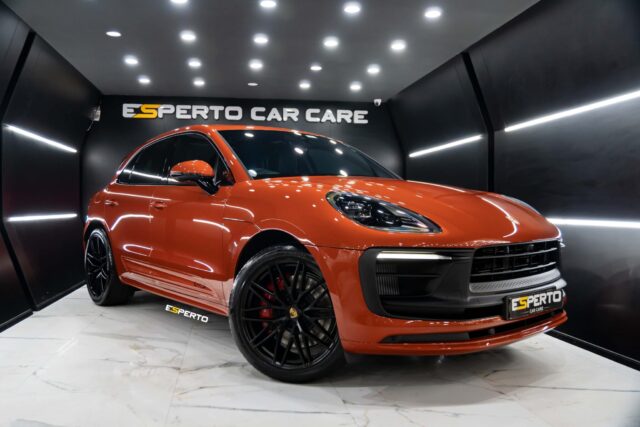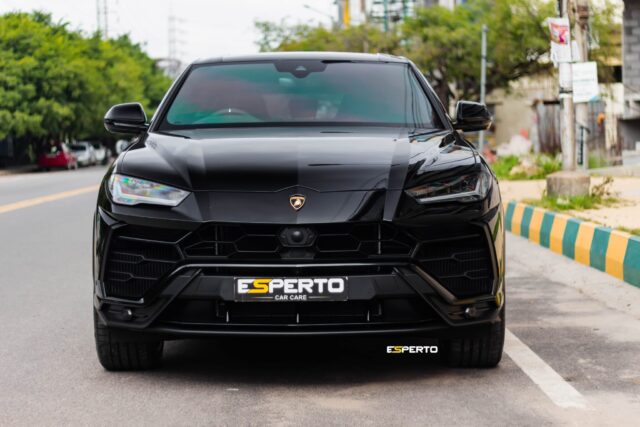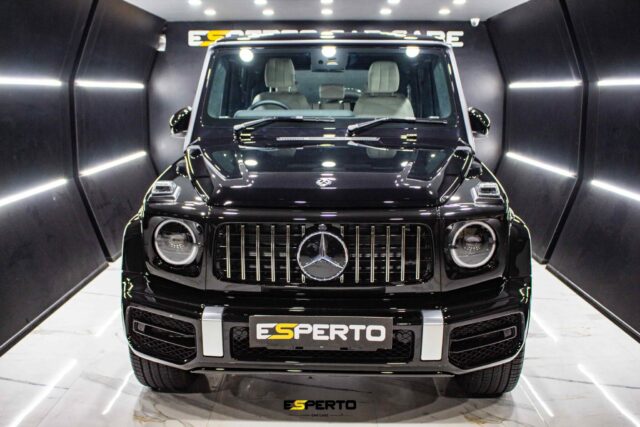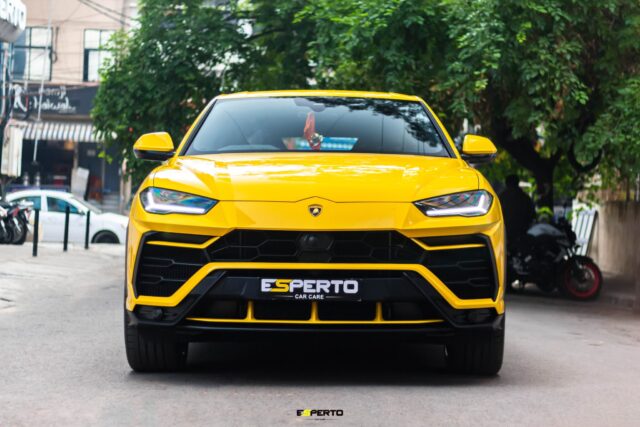Paint Protection Film (PPF) and vinyl wrap serve distinct purposes for car care; PPF offers superior protection with its thicker, self-healing polyurethane material, ideal for guarding against scratches and rock chips. Conversely, vinyl wraps focus on aesthetic enhancement, providing a myriad of design options with less emphasis on durability. While PPF guarantees longevity and maintains the car’s original paint, the choice between the two depends on the balance of protection needs and stylistic preferences. For more insights, this comparative analysis explores their specific benefits and applications, including considerations of ppf or vinyl wrap.
Key Takeaways
- PPF provides superior protection against rock chips and scratches, which is ideal for preserving car paint.
- Vinyl wraps offer extensive styling options with various colors and finishes, primarily for aesthetic customization.
- PPF is thicker and more durable, typically lasting longer than vinyl wraps, which are thinner and more susceptible to damage.
- The cost of PPF is generally higher due to its material quality and installation requirements, but it enhances resale value by protecting the original paint.
- Vinyl wraps are less expensive and easier to replace, making them suitable for those who frequently change their vehicle’s appearance.
What are the Key Differences Between PPF and Vinyl Wrap?
When comparing Paint Protection Film (PPF) and vinyl wraps for cars, it is essential first to distinguish their primary functions and material composition.
PPF is generally thicker than vinyl wrap, offering more substantial protection against physical abrasions and environmental damage.
Regarding cost, vinyl wraps are typically less expensive, but the overall value needs to be assessed in relation to the longevity and protective benefits each option provides.
Understanding the Difference Between PPF and Vinyl Wrap
In the domain of automotive aesthetics and protection, Paint Protection Film (PPF) and vinyl wraps serve distinct purposes, each engineered with unique characteristics to meet different needs, including the vinyl wrap purpose. PPF, primarily used to protect your car’s paint from scratches, chips, and environmental elements, offers a clear, durable barrier that preserves the original paint. Conversely, vinyl wraps provide an avenue for customization, allowing vehicle owners to alter their car’s appearance with a variety of colors and finishes without a permanent commitment.
| Feature | PPF | Vinyl Wrap |
|---|---|---|
| Primary Purpose | Paint protection | Aesthetic modification |
| Appearance | Transparent, maintains original look | Available in multiple colors & finishes |
| Durability | High, self-healing capabilities | Lower than PPF, prone to wear |
| Protection Level | High against physical damages | Primarily protects against UV rays |
This table underscores the critical differences, guiding consumers in choosing the right option for their needs.
PPF vs Vinyl Wrap: Which is Thicker?
Thickness is a pivotal factor distinguishing Paint Protection Film (PPF) and vinyl wraps, both popular choices for car owners looking to enhance their vehicle’s exterior.
Generally, paint protection films are made thicker than vinyl wraps. The thickness of PPF typically ranges from 8 to 14 mils, providing a substantial protective coating against scratches, chips, and weathering.
In contrast, vinyl wrap is a thin layer, usually about 2 to 4 mils thick, primarily used for aesthetic modifications rather than extensive surface protection.
This significant difference in thickness makes PPF more flexible in absorbing impacts and resisting damage, positioning paint protection film vs. vinyl as a more robust option for those prioritizing durability over mere cosmetic changes.
How Do They Compare in Terms of Cost?
Although both PPF and vinyl wraps serve as popular options for car customization, their cost implications differ considerably, primarily due to material and installation complexities.
PPF installation tends to be more expensive than vinyl wraps because of the high-grade material used for long-term paint protection and the intensive professional installation process required. The final cost depends on factors like the car’s model, total coverage area, and the specific product grade used.
Vinyl wraps, while generally less costly, offer extensive custom designs but lack the durability PPF provides. Maintenance for PPF is also more demanding, which could potentially increase long-term costs but can enhance resale value due to its protective qualities.
Both options require professional installation to achieve the best results.
How Does Each Protect Your Car’s Paint?
Paint protection film (PPF) offers robust defense against scratches and minor abrasions, primarily due to its self-healing properties when exposed to heat.
In contrast, vinyl wrap primarily enhances the vehicle’s aesthetic, although it provides a basic level of protection by safeguarding the paint against UV rays and minor scuffs.
The choice between PPF and vinyl wrap consequently hinges on prioritizing either long-term durability or visual customization of the car’s exterior.
PPF Protects Your Car’s Paint from Scratches
Durability is a key factor when considering the protection of a car’s paint, and Paint Protection Film (PPF) serves as a robust shield against various forms of physical damage.
PPF is specifically engineered to protect a vehicle’s paint from damage, including minor scratches that can occur from everyday encounters with road debris and environmental factors. This film, often thicker than vinyl wraps, adheres directly to the vehicle’s surface, safeguarding the paint beneath.
Importantly, PPF wrap boasts self-healing properties, allowing it to absorb impacts and restore its original state, thereby prolonging the aesthetic and structural integrity of the paint.
Vinyl Wrap: Appearance of Your Car vs Durability
Vinyl wrap, primarily known for its aesthetic appeal, considerably alters the appearance of your car. As a flexible material, vinyl wrap allows for a wide range of custom graphics, making it popular for those seeking personalization.
However, when it comes to durability, vinyl wraps are less robust than PPF.
- Personalization: Vinyl wraps offer endless possibilities for custom graphics, allowing car owners to showcase their unique style.
- Transformation: The aesthetic appeal of vinyl wrap installation can completely revamp your vehicle’s exterior.
- Flexibility: Being a flexible material, vinyl wrap conforms to every curve and angle of your car, ensuring a smooth, seamless finish.
What is the Installation Process Like for Both PPF and Vinyl Wrap?
The installation process for both Paint Protection Film (PPF) and vinyl wraps demands precision and expertise, though each follows a distinct procedure.
For PPF, the focus is on ensuring maximum protection, involving meticulous surface preparation followed by the strategic application of the film to guard against scratches and environmental elements.
In contrast, applying a vinyl wrap includes steps such as cleaning, measuring, and the careful placement of the vinyl to achieve aesthetic enhancement without bubbles or misalignments.
Both processes present unique challenges, such as temperature sensitivity and contamination risk.
How to Install PPF for Maximum Protection
Although both Paint Protection Film (PPF) and vinyl wrap serve to safeguard and enhance a vehicle’s appearance, their installation processes differ considerably in terms of technique and focus.
- Surface Preparation: The vehicle’s exterior is meticulously cleaned to remove all contaminants. This guarantees that the specially formulated adhesive bonds effectively with the surface.
- Application: Applying PPF involves stretching the transparent film carefully across the entire car, starting from one end and working systematically to avoid bubbles and wrinkles. This method is essential for protecting against minor rock chips and abrasions.
- Finishing Touches: The edges are wrapped tightly and any excess film is trimmed. The self-healing properties of PPF films activate under heat, allowing the film to mend itself from light scratches, assuring the PPF can last for years with proper maintenance.
Steps to Applying a Vinyl Wrap on Your Car
Switching focus to vinyl wraps, the installation process requires precision and attention to detail similar to that of PPF but with some distinctive steps tailored specifically for this material.
Initially, the type of vinyl used is selected based on the desired vehicle’s appearance, guaranteeing the vinyl wrap film complements the car’s aesthetics.
Automotive wraps are then meticulously measured and cut to fit specific sections of the vehicle. During application, the back of the vinyl wrap is exposed, indicating that vinyl wraps are installed dry, unlike some other materials that might require a wet application.
The vinyl wrap is applied carefully, smoothing out any bubbles and guaranteeing the wrap adheres evenly, transforming how the car stands out.
This method guarantees the vinyl wrap for your car is perfectly aligned and secure, enhancing durability and appearance.
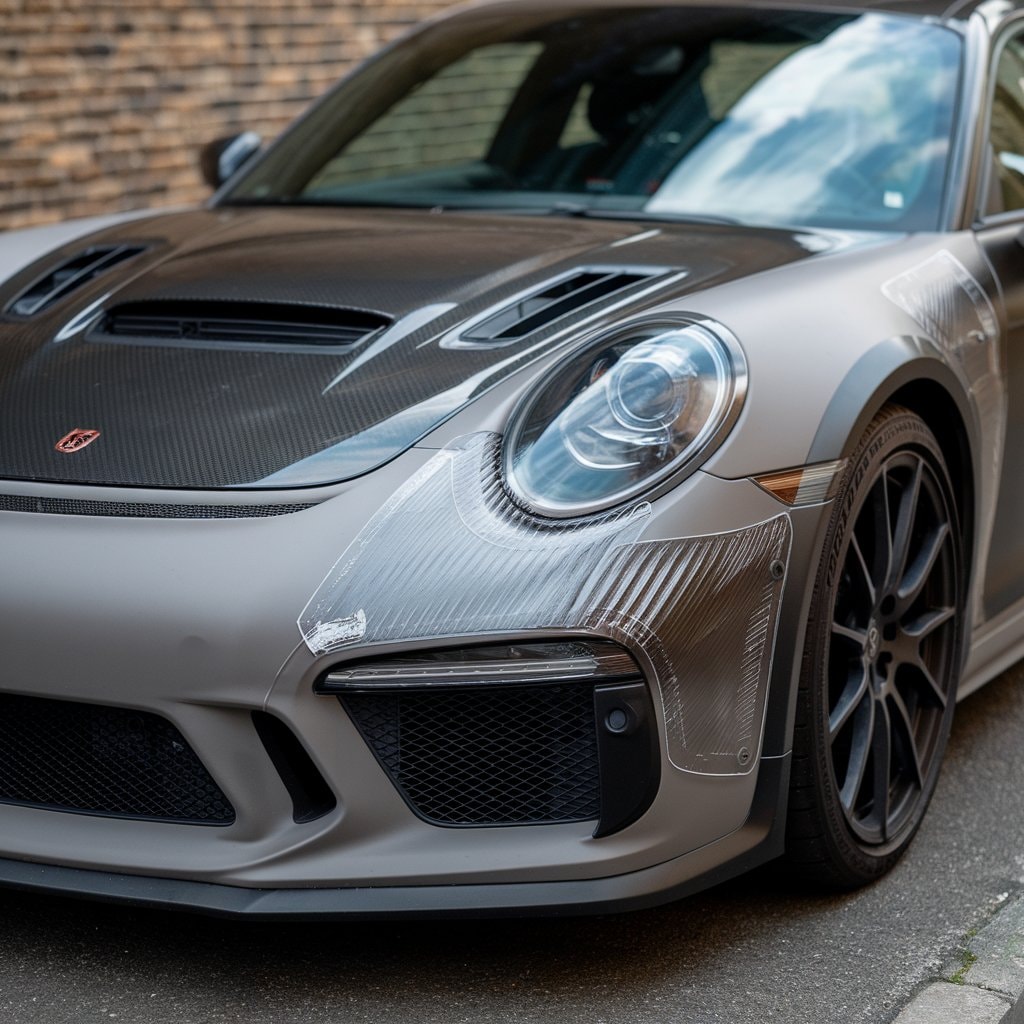
Common Installation Challenges to Consider
While both Paint Protection Film (PPF) and vinyl wraps enhance a vehicle’s aesthetic and protect its surface, they present unique installation challenges that require careful consideration.
- Complexity and Skill Required: PPF is the way for those seeking durability, but it requires precision to install, especially on complex curves of the vehicle’s body. Vinyl wraps protect but are also challenging as they necessitate meticulous surface preparation to avoid bubbles and wrinkles.
- Longevity and Maintenance: PPF lasts longer and is thicker, which can make it harder to manipulate during installation.
- Cost Implications: PPF can be installed on the entire vehicle but is costlier, reflecting its long-term resilience.
Vinyl offers a cost-effective alternative but might require more frequent updates.
Exploring the Strength of Paint Protection Film
Paint Protection Film (PPF) is renowned for its durability, primarily due to its advanced material composition, which includes polyurethane, a polymer that is resistant to impacts and abrasion.
This composition enables PPF to provide a robust defense against various external factors, such as harsh weather conditions and road debris.
The resilience of PPF in protecting vehicle paint from chips, scratches, and stains, especially when considering the thickness of ppf, makes it a preferred choice for maintaining a car’s aesthetic appeal and resale value.
What Makes PPF So Durable?
Understanding what contributes to the remarkable durability of Paint Protection Film (PPF) involves delving into its composition and engineering. PPF is a transparent, thin material specifically designed to shield a vehicle’s paint from damage like rock chips and UV degradation.
Despite its flexibility, this film maintains a high level of impact resistance, safeguarding the original paint on any painted surface.
- Protection Against Elements: PPF provides superior UV protection, preventing the car’s paint from fading.
- Self-Healing Properties: Minor scratches and swirls disappear with heat application, maintaining a pristine appearance.
- Impact Resistance: The film absorbs and disperses the force from impacts, protecting against common road hazards.
This blend of features guarantees that PPF stands out in the protection film vs vinyl wrap debate.
Understanding the Material Composition of Paint Protection Film
Delving into the material composition of Paint Protection Film reveals its capability to endure and protect.
PPF, commonly known as a clear bra or PPF, is a transparent film that is virtually invisible once applied. This protective layer is crafted from a polyurethane material, which contributes to the film’s elasticity, making PPF more flexible and less susceptible to distortion than traditional materials.
The thickness of PPF varies, enhancing its ability to shield the PPF films. It is designed to create a protective barrier that shields the paint from scratches, chips, and contaminants, preserving the vehicle’s aesthetic appeal while offering superior protection compared to vinyl wraps.
For car owners weighing their options, understanding these aspects confirms why PPF is the right choice for long-term vehicle care.
How PPF Stands Up to Harsh Weather and Road Conditions
In addition to its robust material composition, Paint Protection Film (PPF) demonstrates exceptional resilience under severe weather and challenging road conditions. This durability is crucial for car owners who face the relentless threats of nature and the road.
- UV Protection: PPF is imbued with UV inhibitors that prevent the film and underlying paint from fading. This guarantees that cars regularly exposed to harsh sunlight maintain their pristine appearance.
- Impact Resistance: Engineered to absorb impacts, PPF protects against stone chips and road debris that can cause costly damage.
- Environmental Shield: PPF acts as a barrier against bird droppings, tree sap, and other corrosive elements, thereby preventing etchings and swirl marks that degrade the car’s finish.
How Do Maintenance PPF and Vinyl Wrap Compare?
When comparing the maintenance of paint protection film (PPF) and vinyl wraps, each requires distinct care techniques to preserve their aesthetic and functional qualities.
For PPF, it is essential to focus on maintaining the film’s clarity and protection capability, which involves regular cleaning and occasionally applying specialized products to enhance its durability.
In contrast, vinyl wraps demand careful handling to avoid scratches and discoloration, with specific cleaning agents and methods recommended to keep the wrap looking pristine.
Maintaining the Quality of the Film for PPF
Maintaining the quality of Paint Protection Film (PPF) requires meticulous care to guarantee its longevity and effectiveness in protecting vehicle exteriors.
Car owners who want superior defense against scratches and environmental factors opt for PPF because paint protection film is thicker and more durable than alternatives.
However, to preserve its qualities, specific steps must be followed:
- Regular Cleaning: PPF must be wet and cleaned with pH-neutral products to avoid degradation from dirt and contaminants.
- UV Protection: Although PPF is an excellent barrier against harmful UV rays, periodic maintenance to confirm the film’s UV inhibitors are effective is essential.
- Professional Inspection: Regular assessments by professionals confirm that edges remain sealed and the film has not been compromised.
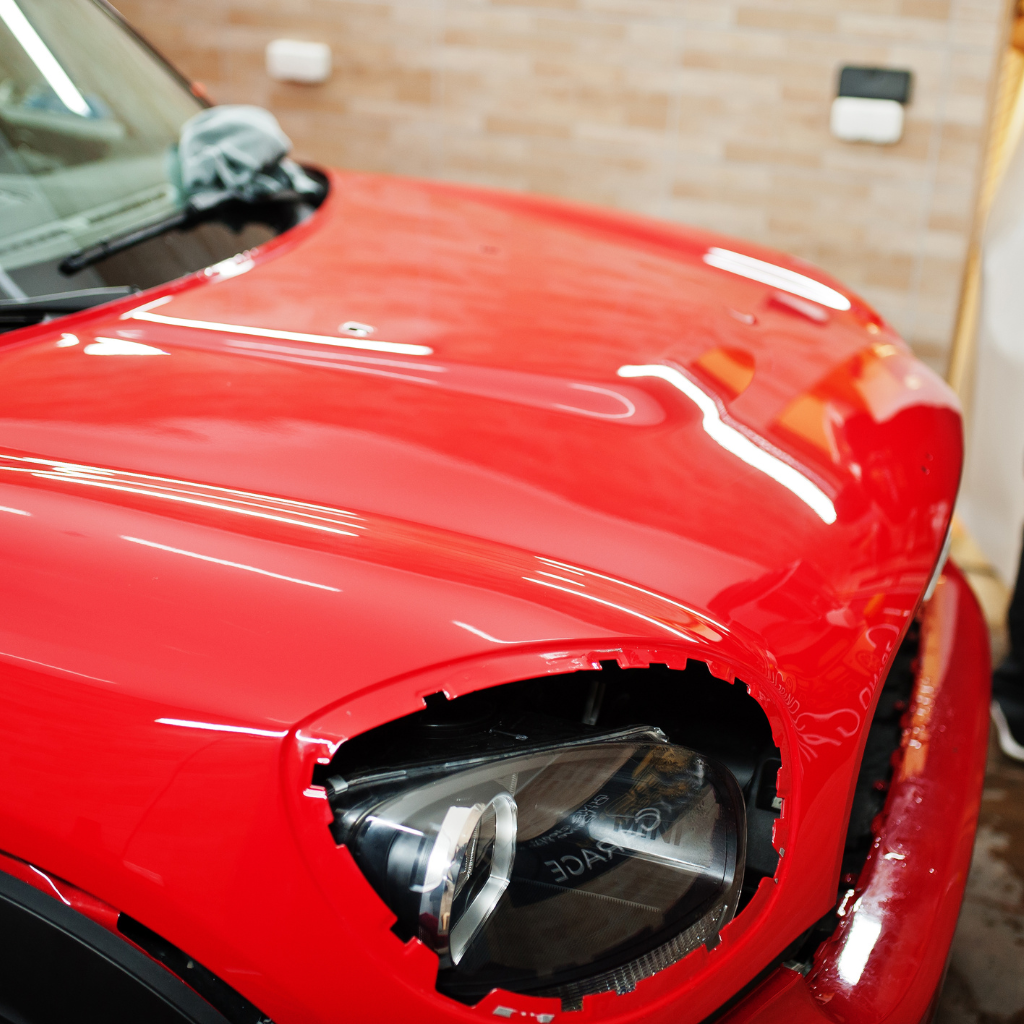
Tips for Keeping Your Vinyl Wrap Looking New
While Paint Protection Film (PPF) is geared towards safeguarding against physical damage, maintaining a vinyl wrap involves a different set of practices primarily focused on preserving its aesthetic appeal.
Vinyl wrap, a flexible material made from a thin material called PVC (polyvinyl chloride), requires careful handling to maintain its lustrous finish. Regular cleaning with mild detergents and soft cloths can prevent dirt accumulation that dulls the wrap’s appearance.
Unlike PPF, vinyl wraps are cheaper and, therefore, more frequently replaced, but proper maintenance can extend their life. It’s essential to avoid harsh chemicals and abrasive tools, which can damage the vinyl.
Detailing a car with vinyl wrap involves focusing on gentle techniques to sustain the vibrant, high-quality finish.
Which is Better for Minor Rock Chips?
When it comes to protection against minor rock chips, Paint Protection Film (PPF) is specifically engineered to absorb impacts and provide a barrier against various forms of debris.
In contrast, vinyl wraps primarily serve aesthetic purposes and offer minimal protection, as they are thinner and less durable against physical impacts.
Comparing the two, PPF offers superior resistance to rock chips, effectively preserving the car’s paint by acting as a shield that mitigates damage from small, high-speed particles.
PPF for Protecting Against Rock Chips
Given its superior durability, Paint Protection Film (PPF) is often considered the ideal choice for guarding against minor rock chips on vehicles.
When car enthusiasts compare PPF vs. vinyl wrap, the robust quality of the film made specifically for protecting against rock chips is a significant factor. PPF offers an almost invisible barrier that preserves the original paint, making PPF a preferred option.
Reasons car owners choose PPF for rock chip protection:
- Enhanced Durability: The thickness and resilience of PPF provide superior defense against abrasions and chips.
- Self-Healing Properties: Many PPF products can self-heal minor scratches and scuffs, maintaining a pristine appearance.
- Longevity: PPF generally lasts longer than vinyl, giving your car sustained protection without frequent replacements.
How Vinyl Wrap Handles Rock Chips
In comparing Paint Protection Film (PPF) and vinyl wrap for rock chip protection, it’s important to examine how effectively vinyl wrap performs under similar conditions. Vinyl wrap, a thin and flexible material, is often considered a temporary solution for styling rather than protection. Unlike vinyl wraps, PPF offers thicker coverage, but many car owners opt for vinyl due to its cost-effectiveness and aesthetic options.
| Feature | Vinyl Wrap |
|---|---|
| Thickness | Less |
| Protection Level | Lower |
| Durability | Shorter lifespan |
| Cost | More affordable |
Given these differences between vinyl wrap and PPF, vinyl wraps are less effective against rock chips, potentially exposing the paint job to damage. Choosing the best for your car depends on balancing protection needs with aesthetic desires.
Conclusion
To summarize, both PPF and vinyl wrap offer distinct benefits for car protection and styling. PPF provides superior protection against physical damage like rock chips, while vinyl wrap offers extensive styling options and is cost-effective. Maintenance demands vary, with PPF requiring less frequent attention. The choice between PPF and vinyl wrap depends on the owner’s priorities—whether they value long-term durability and protection or aesthetic flexibility and cost-effectiveness. Each serves its purpose effectively under different circumstances.


